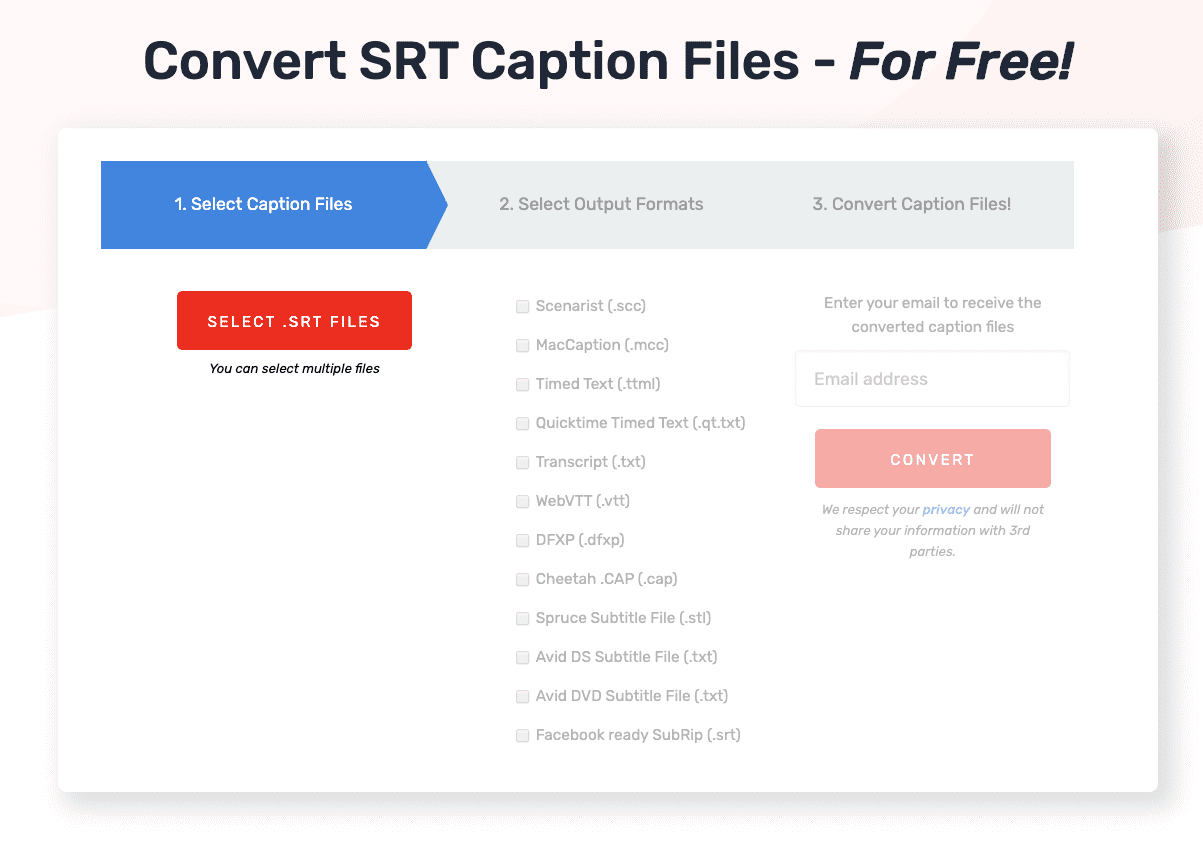

Create srt file how to#
In contrast, subtitles are a translation of a video’s audio for viewers who might not understand the language, such as in a film from another country or dialogue from a Klingon in an episode of “Star Trek.” How to create an SRT file Captions generally refer to a textual representation of all on-screen audio, including sound effects, music, song lyrics, angry dogs barking, spooky doors creaking, or any other sound heard on the audio track. Although people often use these terms interchangeably, captions and subtitles are not the same. SRT files can help generate both SRT subtitles and SRT captions. For example, Facebook’s SRT captioning is slightly different from YouTube’s process. Also, there are various types depending on the platform.

It’s important to note that SRT files are for web video, not TV. The SRT file also includes a written transcript of the audio and the corresponding timestamps. It works by extracting (“ripping”) subtitles and timings from a live video, recorded video, or DVDs. It is a plain-text file that contains all the necessary information for adding subtitles and closed captions to a video. An SRT file refers to a “SubRip Subtitle” file.
Create srt file professional#
Reasons to outsource professional captioning servicesĪn SRT file is one of the most-used formats for subtitling and captioning videos.

Create srt file software#
Most media players and video software support SRT files and you can even create them yourself. Read on to learn about what SRT files are, how they work, and how to use them to make your videos accessible. Fortunately, adding captions to videos is simple using SRT files. Additionally, adding captions enhances the performance of video ads by allowing larger audiences to absorb and retain the information.Ĭaptioning and subtitling videos is critical to accessibility but, clearly, there are other benefits as well. Captions make video content easier to understand and accessible to all. These stats reaffirm the importance of captioning content. Verizon Media found that 92% of viewers watch videos with the sound off on their mobile devices while 83% watch without sound on their PC. In fact, 80% of people who use captions are not deaf or hard of hearing. Not only do they accommodate those who are hard of hearing, but they’re also beneficial to all viewers. Finally, Verbit returns the file to the user, and it’s ready for them to upload with their video.Subtitles and captions are essential for video content. Next, human expert transcribers edit and review the file to ensure professional-level accuracy. Verbit generates the initial captions using its sophisticated Automatic Speech Recognition technology. First, users can upload a file to Verbit’s user-friendly platform. For instance, Verbit is an essential accessibility partner that can provide accurate, professional captions in as little as four hours.Ĭreating captions with Verbit is easy. While it is possible to create SRT files from video manually, it’s easier and more efficient to work with a professional captioning and transcription service. Fortunately, it’s easy to learn how to create an SRT file and start providing viewers with a more equitable experience. Providing accurate, comprehensive captions offers a more equitable experience while helping meet required accessibility standards. Captions are far more inclusive of audience members who are Deaf or hard of hearing and individuals with auditory processing disorders. This feature differs from open captions that viewers cannot remove.Īny video producer concerned with accessibility should include captions rather than subtitles on their videos. When it comes to closed captions, viewers can turn these on and off at will. Additionally, viewers often use captions to display a text version of audio elements in the same language as the original audio. Unlike subtitles, captions include both spoken dialogue and non-speech elements like sound effects, pauses and more. CaptionsĪlternatively, captions are a tool that supports viewers who are Deaf or hard of hearing. Subtitles will display the translated dialogue at the bottom of the screen and typically will remain on-screen for the duration of the content. Most commonly, users will choose to add subtitles to a video when they are viewing the content in a non-native language. A video with subtitles will include dialogues or voiceovers but leave out non-speech audio elements like sound effects. Subtitles refer to a text version of audio that supports a hearing audience. While it’s not uncommon for people to use the terms “captions” and “subtitles” interchangeably, there are actually some critical distinctions between the two. It’s important to note that SRT files are useful for generating both SRT captions and SRT subtitles.


 0 kommentar(er)
0 kommentar(er)
